Matthew Huang9780849301049, 0849301041
Table of contents :
Table of Contents……Page 0
VEHICLE CRASH MECHANICS……Page 1
PREFACE……Page 3
TABLE OF CONTENTS……Page 6
CHAPTER 1 CRASH PULSE AND KINEMATICS……Page 14
CHAPTER 2 CRASH PULSE CHARACTERIZATION……Page 16
CHAPTER 3 CRASH PULSE PREDICTION BY CONVOLUTION METHOD……Page 18
CHAPTER 4 BASICS OF IMPACT AND EXCITATION MODELING……Page 19
CHAPTER 5 RESPONSE PREDICTION BY NUMERICAL METHODS……Page 21
CHAPTER 6 IMPULSE, MOMENTUM, AND ENERGY……Page 22
CHAPTER 7 CRASH SEVERITY AND RECONSTRUCTION……Page 24
UNIT CONVERSIONS……Page 26
1.2 VEHICLE IMPACT MODES AND CRASH DATA RECORDING……Page 27
1.2.1 Accelerometer Mounting and Coordinate Systems……Page 29
1.3 DIGITAL FILTERING PRACTICE PER SAE J211 AND ISO 6487……Page 30
1.3.1 Relationship Between Two Points in a Frequency Response Plot……Page 34
1.3.2 Chebyshev and Butterworth Digital Filters……Page 35
1.3.3 Filter Type, Deceleration Magnitude, and Phase Delay……Page 37
A. Single-step and multiple-step function inputs……Page 39
B. Vehicle crash pulse and Driver chest deceleration……Page 40
1.3.4.1 Moving Window Averaging……Page 43
1.3.4.2 Equivalent Cutoff Frequency……Page 45
1.4.1 Computing Acceleration from a Velocity-Displacement Curve……Page 47
1.4.2.1 Car Jumping and Landing……Page 50
1.4.3 Slipping on an Incline -Down Push and Side Push……Page 55
1.4.4 Calculation of Safe Distance for Following Vehicle……Page 58
1.5.1 Vehicle Kinematics in a Fixed Barrier Impact……Page 59
1.5.2 Unbelted Occupant Kinematics……Page 60
1.5.2.1 Kinematics Based on Accelerometer Data……Page 61
1.5.2.3 Vehicle Crush, Sled Displacement, and Crash Pulse Centroid……Page 63
1.6.1 Vehicle Kinematics in Different Test Modes……Page 64
1.6.2 Vehicle Energy Density……Page 66
1.6.3 Occupant Kinematics in Different Test Modes……Page 67
1.7 KINEMATIC VARIABLES……Page 69
1.7.1 Use of Residual Energy Density in Air Bag Sensor Activation……Page 70
1.7.3 Vehicle-Occupant-Restraint (VOR) Interaction……Page 71
1.8 CASE STUDY: SINGLE VEHICLE-TREE IMPACT ACCIDENT……Page 74
1.8.1 Analysis of the Recorder Crash Data……Page 75
1.8.2 Frequency Spectrum Analysis for Electronic Crash Sensing……Page 78
1.9 RESTRAINT COUPLING……Page 79
1.9.1 Restraint Specific Stiffness and Onset Rate of Occupant Deceleration……Page 80
1.9.2 Occupant Response in the Restraint Coupling Phase……Page 81
1.9.3 Maximum Occupant Response, Timing, and Onset Rate……Page 85
1.9.4.1 3-D Contour Plots of the Occupant Response and Timing……Page 86
1.9.4.2 Vehicle, Occupant, and Restraint (VOR) Analysis Charts……Page 88
1.9.5 VOR Trend Analysis Based on Car and Truck Test Results……Page 92
1.10 OCCUPANT RIDEDOWN ANALYSIS AND ENERGY MANAGEMENT……Page 93
1.10.1 Energy Density Model……Page 97
1.10.1.2 Ridedown, Restraint Energy Densities, and Timings……Page 98
1.10.2.1 Test Energy Densities……Page 100
1.10.2.2 Model Energy Densities……Page 101
1.10.3 Contour Plots of Ridedown Efficiency and Occupant Response……Page 104
1.10.4 Restraint Design with Constant Occupant Deceleration……Page 106
1.10.5 Design Constraint and Trade-Off……Page 108
1.11 REFERENCES……Page 109
2.2 MOMENT-AREA METHOD……Page 111
2.2.1 Displacement Computation Without Integration……Page 112
2.2.2 Centroid Time and Characteristics Length……Page 113
2.2.3 Construction of Centroid Time and Residual Deformation……Page 114
2.2.3.1 Centroid of a Quarter-Sine Pulse……Page 115
2.3.1 ASW (Average Square Wave)……Page 117
2.3.2 ESW (Equivalent Square Wave)……Page 118
2.3.2.1 ESW Transient Analysis……Page 119
(2) Case Study: Pulse Shape and Centroid Location……Page 120
2.3.4 Derivation of TESW Parameters……Page 121
2.3.4.1 Deformation and Rebound Phases……Page 122
2.3.5 Construction of TESW Parameters……Page 123
2.3.5.1 Relationships Between TESW and ASW……Page 124
Case Study: Front and Rear Loaded Crash Pulses……Page 125
2.3.6.1 Rear-Loaded……Page 127
2.4.1 Fourier Equivalent Wave (FEW)……Page 130
2.4.2 FEW Sensitivity Analysis with Boundary Conditions……Page 131
2.4.3 Kinematics and Energy Comparison……Page 132
2.4.4.1 Discrimination of Pole Impact Crash Severity……Page 135
2.4.4.2 Use of All Negative FEW Coefficients in Pole Tests……Page 138
2.4.5 Use of Pulse Curve Length in Crash Severity Detection……Page 141
2.4.6 FEW Analysis on Body Mount Attenuation……Page 142
2.4.6.1 Frame Impulse Attenuation by Body Mount……Page 143
2.4.7.1 Air Bag Sensor Bracket Design Analysis……Page 146
Time Domain Analysis of Resonance……Page 147
2.4.7.2 Re-synthesis of a Crash Pulse Without Resonance……Page 148
2.4.8.1 Deriving the Closed-form Solutions for TWA Parameters……Page 149
2.4.9 Bi-slope Approximation (BSA)……Page 151
2.4.9.1 Comparison of Test Pulse, BSA, and TWA……Page 152
2.4.10 Harmonic Pulses – Background……Page 154
2.4.11 Halfsine Approximation……Page 156
2.4.12 Haversine Approximation……Page 159
2.4.13 Comparison of Halfsine and Haversine Pulses……Page 161
2.4.14 Response of Air Bag Sensor to Harmonic Pulses……Page 162
2.4.14.1 Sensor Dynamic Equations……Page 164
2.4.15 Head Injury Criteria……Page 165
(B) HIC Topographs of Other Simple and Test Pulses……Page 168
2.4.16 Application of HIC Formula in Head Interior Impact……Page 170
2.5 REFERENCES……Page 171
3.1 INTRODUCTION……Page 173
3.2 TRANSFER FUNCTION VIA CONVOLUTION INTEGRAL……Page 174
3.2.1 Convolution Method and Applications……Page 175
3.2.2 Solution by the Least Square Error Method……Page 176
3.2.3 Matrix Properties and Snow-Ball Effect……Page 177
3.2.4 Case Studies: Computing Transfer Functions……Page 180
3.3 TRANSFER FUNCTION AND A SPRING-DAMPER MODEL……Page 183
3.3.1 FIR Coefficients and K-C Parameters of a Spring-Damper Model……Page 184
3.3.2 Transfer Functions of Special Pulses……Page 186
3.4 BELTED AND UNBELTED OCCUPANT PERFORMANCE WITH AIR BAG……Page 188
3.4.1 Test Vehicle and Occupant Responses……Page 189
3.4.2 Truck #1: Unbelted Occupant with Full-Powered Air Bag……Page 192
3.4.2.2 Filtered Signals of FIR Coefficients……Page 193
3.4.3.1 Restraint Transfer Function Validation……Page 194
3.4.3.3 Response Prediction Using Fourier Equivalent Wave (FEW)……Page 195
3.5 BODY MOUNT AND TORSO RESTRAINT TRANSFER FUNCTIONS……Page 196
3.5.1 Body Mount Characteristics and Transient Transmissibility……Page 197
3.5.2 Types F and T Body Mount Transfer Functions……Page 199
3.5.3.1 Frame Impulse Duration and Transient Transmissibility……Page 200
3.5.3.2 Testing Frame Rail for a Desired Impulse Duration……Page 201
3.5.4.1 Vehicle and Belted Occupant Performances in Trucks F and T……Page 202
3.5.4.2 Truck T Response Prediction with Truck F Restraints……Page 205
3.6 EFFECT OF SLED AND BARRIER PULSES ON OCCUPANT RESPONSE……Page 207
3.7 OTHER APPLICATIONS……Page 209
3.8.1 Forward Prediction by Finite Impulse Response (FIR)……Page 210
3.8.2 Inverse Filtering (IF)……Page 212
3.8.3.1 Transferring [X] to [Y] with [H]…….Page 213
3.8.3.2 Transfer [Y] to [X] with [H]’……Page 214
3.8.3.3 Transferring [Y] to [X] using [IF]……Page 215
3.8.4 RIF Application in Frame Pulse Prediction……Page 216
3.9 REFERENCES……Page 218
4.2 IMPACT AND EXCITATION – RIGID BARRIER AND HYGE SLED TESTS……Page 219
4.2.1.1 A Vehicle-to-Barrier Displacement Model……Page 223
4.2.1.2 Unbelted Occupant Kinematics……Page 225
4.3.1 Vehicle and Occupant Transient Kinematics……Page 227
4.3.2.1 Method 1……Page 228
4.3.2.2 Method II……Page 229
4.3.3.1 Case Study – High Speed Crash……Page 230
4.3.4 Occupant Response Surface and Sensitivity……Page 231
4.3.4.1 Restraint Design Optimization by Response Contour Plots……Page 232
4.3.4.2 Sensitivity of Occupant Response to ESW……Page 233
4.3.4.3 Sensitivity of Occupant Response to Dynamic Crush……Page 234
4.3.4.4 Statistical Regression of Test Data and Model Responses……Page 235
4.3.4.5 Response Prediction and Ridedown Efficiency……Page 236
4.4 BASICS OF SPRING AND DAMPER DYNAMIC MODELING……Page 238
4.4.1 Spring and Damper Elements……Page 239
4.4.3 2-Mass (Vehicle-to-Vehicle) Impact Model……Page 240
4.4.4 Dynamic Equivalency Between Two-Mass and Effective Mass Systems……Page 241
4.5.1 Model Formulation……Page 242
4.5.2.2 Dynamic Crush Function……Page 244
4.5.2.3 Estimating Time of Dynamic Crush, Tm……Page 245
4.5.2.5 Mass and Stiffness Ratios in Vehicle-to-Vehicle Impact……Page 246
4.5.3 Effect of Test Weight Change on Dynamic Responses……Page 247
4.6 SPRING-MASS OCCUPANT MODEL SUBJECTED TO EXCITATION……Page 251
4.6.1 Response Solutions due to TESW and Sinusoidal Excitation……Page 252
4.6.1.1 Model with TESW Excitation, (E + j t)……Page 253
4.6.1.2 Sine Excitation (E sin wt)……Page 255
4.6.2 Model Response due to Sinusoidal Displacement Excitation……Page 258
4.7.1.1 Relative Motion Analysis (An Effective Mass System)……Page 261
4.7.1.2 Individual Vehicle Response Analysis……Page 263
4.7.3 Truck and Car Occupant Responses due to Halfsine Excitation……Page 264
4.7.4 Elasto-plastic Modeling……Page 266
4.8 A MAXWELL MODEL……Page 268
4.8.1 A Damper-Mass System (without Oscillatory Motion)……Page 269
4.8.3 Alternate Method: Zero Mass Between Maxwell Spring and Damper……Page 270
4.8.4.2 Infinite Damping Coefficient, c =…….Page 272
4.8.5 Model Response Characteristics with Transition Damping Coefficient……Page 273
4.9.1 Transient and Major Responses of Kelvin Model……Page 277
4.9.1.1 Underdamped System (.< 1)……Page 278
4.9.1.2 Critically Damped System (.= 1)……Page 280
4.9.1.3 Overdamped System (.> 1)……Page 281
4.9.1.4 Normalized Response Comparisons of Three Damping Systems……Page 282
4.9.2 Factors Affecting the Pulse Shape of System with Various Damping……Page 283
4.9.3 Hysteresis Loop……Page 286
4.9.4 Coefficient of Restitution and Damping Factor (.)……Page 289
4.9.5 Contact Duration……Page 290
4.10 DAMPING FACTOR AND NATURAL FREQUENCY FROM TESTS……Page 291
4.10.2 Application to SUV and Sedan Frontal Structure Properties……Page 293
4.11 EXCITATION OF THE KELVIN MODEL — OCCUPANT AND RESTRAINT……Page 295
4.11.1.1 Testing the Haversine Excitation……Page 298
4.11.2 Effect of Restraint Damping Control on Occupant Response……Page 299
4.12 REFERENCES……Page 300
5.2 HYBRID MODEL — A STANDARD SOLID MODEL……Page 301
5.2.1 E.O.M. for Hybrid Model……Page 302
5.2.2 Dynamic Response and Principles of Superposition……Page 303
5.2.3 Combination of Two Hybrid Models……Page 304
5.2.4 Dynamic Equivalency between Two Non-Isomorphic Hybrid Models……Page 306
5.2.4.1 Dynamic Equivalency in Transient Kinematics and Crush Energy……Page 308
5.3 TWO MASS-SPRING-DAMPER MODEL……Page 309
5.3.1 Solutions of the Characteristic Equation……Page 310
(II) Displacement components x12 and x22 due to s3 and s4, respectively……Page 311
Case 2: One pair of complex conjugate and two real and negative roots……Page 312
5.3.2 Vehicle Displacement Responses in Fixed Barrier Impact……Page 313
5.3.3 Application in Pre-Program Vehicle Structural Analysis……Page 315
5.3.4 Application in Post-Crash Structural Analysis……Page 317
5.4 NATURAL FREQUENCIES IN TWO–MASS SYSTEM……Page 318
5.4.1 Formulas for the Natural Frequencies……Page 319
5.4.2 Natural Frequency Ratio and Stiffness Computation……Page 320
5.4.3.1 Doubled-Up of a Spring-Mass Model……Page 321
5.4.3.2 Splitting of a Spring-Mass Model……Page 322
5.5.1 Imbedded Random Search (IRS)……Page 324
5.5.2 Newton-Raphson Search Algorithm……Page 326
5.6.1 Loading Phase Simulation……Page 327
5.6.2 Unloading Phase Simulation……Page 328
5.6.3 Model with Power Curve Loading and Unloading……Page 329
5.6.3.1 Unloading Parameters k’, n’, and xi in Reloading Cycle……Page 330
5.6.3.2 Deceleration Contributions of Spring and Damper……Page 332
5.7.1 Simple Structure Force-Deflection Table……Page 333
5.7.2 Push Bumper Force-Deflection Data……Page 334
5.7.3 Basic Operation of EA Types……Page 338
5.7.5 Coefficient of Restitution, Static, and Dynamic Crush Relationship……Page 340
5.7.5.1 1-mass Model with Elasto-Plastic Spring……Page 341
5.8 SIDE-IMPACT AND FRONTAL OFFSET MODELS……Page 343
5.8.1 Side Impact Model……Page 344
5.8.2.1 Basic Concepts in Offset Impact Modeling……Page 346
5.8.2.2 Full Barrier and Frontal Offset Test Results……Page 347
5.8.2.4 Optimal Vehicle Structure for Both Full Frontal and Offset Tests……Page 349
5.8.2.5 An Offset Lumped-Mass Model……Page 350
5.9 REFERENCES……Page 351
6.2 BACKGROUND……Page 353
Case Study: Batting A Baseball…….Page 354
6.3 CENTER OF GRAVITY AND MOTION THEOREM……Page 356
6.3.1 Location and Motion of Center of Mass……Page 357
6.3.2 Conservation of Momentum and CG Formula……Page 358
6.3.3 CG Motion Theorem……Page 359
6.3.4 Use of CG Motion Theorem in a Three !Car Collision Analysis……Page 362
Method 1: Simple Solution Using CG Motion Theorem……Page 363
Method II: In-Depth Analysis Using Momentum and Displacement Relationships……Page 364
6.4 IMPULSE AND CIRCLE OF CONSTANT ACCELERATION……Page 367
6.4.1 Derivation of Acceleration at Point Q……Page 368
Special Case……Page 369
6.4.2 Circle of Constant Acceleration (COCA)……Page 370
6.4.3 Construction of COCA Given the Acceleration Ratio, c……Page 371
Case Study 1: Slender Rod……Page 372
Case Study 3: Impulse to Ring……Page 373
Case Study 4: COCA with Various Acceleration Ratios……Page 374
6.4.6 COCA Evaluation of Impact Severity……Page 375
6.4.7 Given the Coordinates of Point Q, Find the Acceleration Ratio c……Page 377
6.4.8 Distributed Loading by Superposition……Page 378
6.5 PRINCIPLE OF WORK AND ENERGY……Page 379
6.5.1 Applications using Principle of Impulse, Momentum, and Energy……Page 380
6.5.2.1 Drop Test on a Weightless Spring……Page 382
6.5.2.2 Drop Test Using a Spring Having Finite Weight……Page 383
6.5.2.3 Horizontal Impact on a Bar/Spring……Page 385
6.5.3 Rebound Criterion in a Two-Mass Impact……Page 386
6.5.4 Separation Kinematics in a Multi-Mass Impact……Page 388
6.5.4.1 Separation Kinematics in a 3-Vehicle Collision……Page 389
6.5.5 COR, Times of Dynamic Crush, and Separation Time……Page 390
6.5.6 Coefficient of Restitution and Stiffness in Vehicle Crashes……Page 391
6.6.1 CG Height Determination……Page 394
6.6.2 Moment of Inertia Using Trifilar Pendulum Method……Page 396
6.6.3 Moment of Inertia Using Swinging Pendulum Method……Page 399
6.6.4.1 Derivation of CSV Formulas……Page 400
6.6.4.2 Normalized CSV Equation and Applications……Page 402
6.7.1 Rollover Dynamics of a Rigid Vehicle in a Steady Turn……Page 405
6.7.2 Rollover Detection and Threshold Criterion of a Rigid Vehicle……Page 407
6.7.3 Transient Rollover Dynamics of a Rigid Vehicle……Page 408
6.7.3.1 Transient Rollover Without Lateral Acceleration……Page 409
6.7.3.2 Transient Rollover With Lateral Acceleration……Page 410
6.8.1 Vector Method for Eccentric Loading Analysis……Page 412
6.8.2 Rollover Kinematics Using the Vector Method……Page 414
6.8.3 Conditions for a Vehicle to Stop Rolling Following Rollover……Page 416
6.9 REFERENCES……Page 420
7.2.1 Two-Degree-of-Freedom Occupant Model……Page 421
7.2.2 Effect of Seat Belt and Pretensioner on Occupant Kinematics……Page 424
7.3.1 Modeling Pretensioning Effects in a System Test……Page 425
7.3.2 Modeling Pretensioning Effects in a Component Test……Page 429
7.3.3 Transient Analysis of a Preloaded Model — Impact and Excitation……Page 431
7.4 CENTRAL COLLISIONS……Page 433
7.4.1 A Collision Experiment……Page 434
7.4.2 Relative Motion During Impact……Page 436
7.4.3 Kelvin’s Theorem, Total Crush, and Dissipated Energies……Page 438
7.4.4 Total Crush Energy……Page 439
7.4.5 Individual Crush Energy……Page 441
7.5 NON-CENTRAL COLLISIONS……Page 442
7.5.1 Case Study 1: Central Collision……Page 445
7.6 USE OF )V AND BEV IN CRASH SEVERITY ASSESSMENT……Page 446
7.6.1 Crash Severity Index……Page 448
7.6.1.1 Compatibility by Equal Crash Severity Index……Page 449
7.6.2 Crash Momentum Index……Page 450
7.6.3.2 Power Curve Force-Deflections……Page 451
7.6.3.3 Computation of Barrier Equivalent Velocity (BEV)……Page 453
7.7.1 Damage Boundary Curve……Page 455
7.7.1.1 Construction Steps for DBC……Page 456
7.7.1.2 Mechanic Principles of DBC……Page 457
7.7.2.1 Vehicle Crush Characteristics……Page 458
7.7.2.2 Vehicle Peak Responses……Page 460
7.8.1 Kelvin’s Theorem……Page 461
7.8.2 Lumped Mass Modeling on Crash Severity……Page 467
7.9 INTERMEDIATE MASS EFFECT……Page 469
7.10.1 Models with Same Effective Stiffness……Page 472
7.10.2 Models with Different Effective Stiffness……Page 476
7.11.1 Background……Page 478
7.11.2 Vehicle Size and Stiffness Coefficient Categories……Page 481
7.11.2.1 Computing Stiffness Coefficients, Intercept and Slope……Page 482
7.11.4 Four-Way Plot of Stiffness Coefficients and Responses……Page 483
7.11.5.2 Elasto-Plastic Force Deflection……Page 485
7.11.5.1 Estimate of the Vehicle Impact Severity……Page 486
7.11.5.2 Estimate of the Sensor Performance……Page 487
7.12 REFERENCES……Page 488
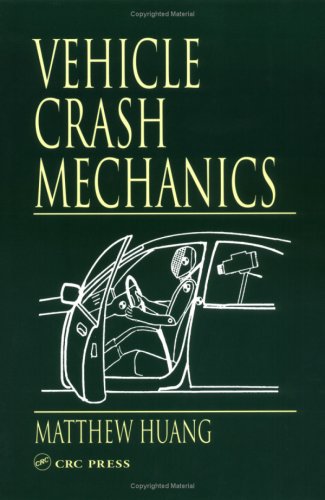

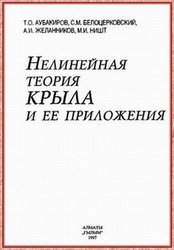

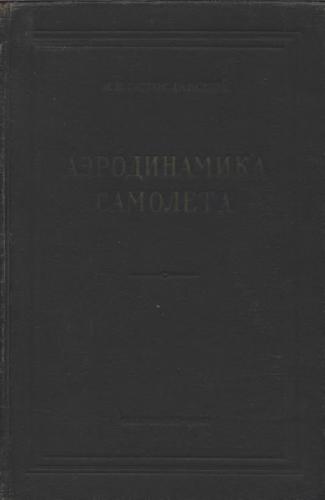
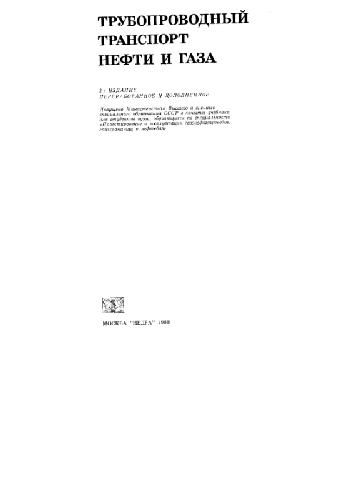
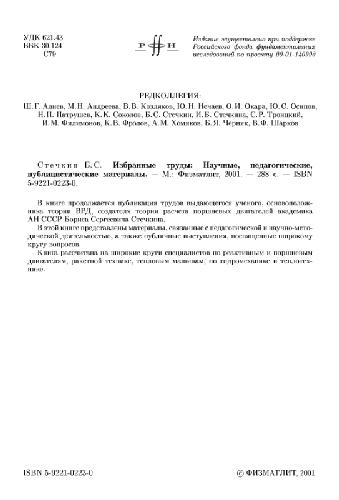
Reviews
There are no reviews yet.